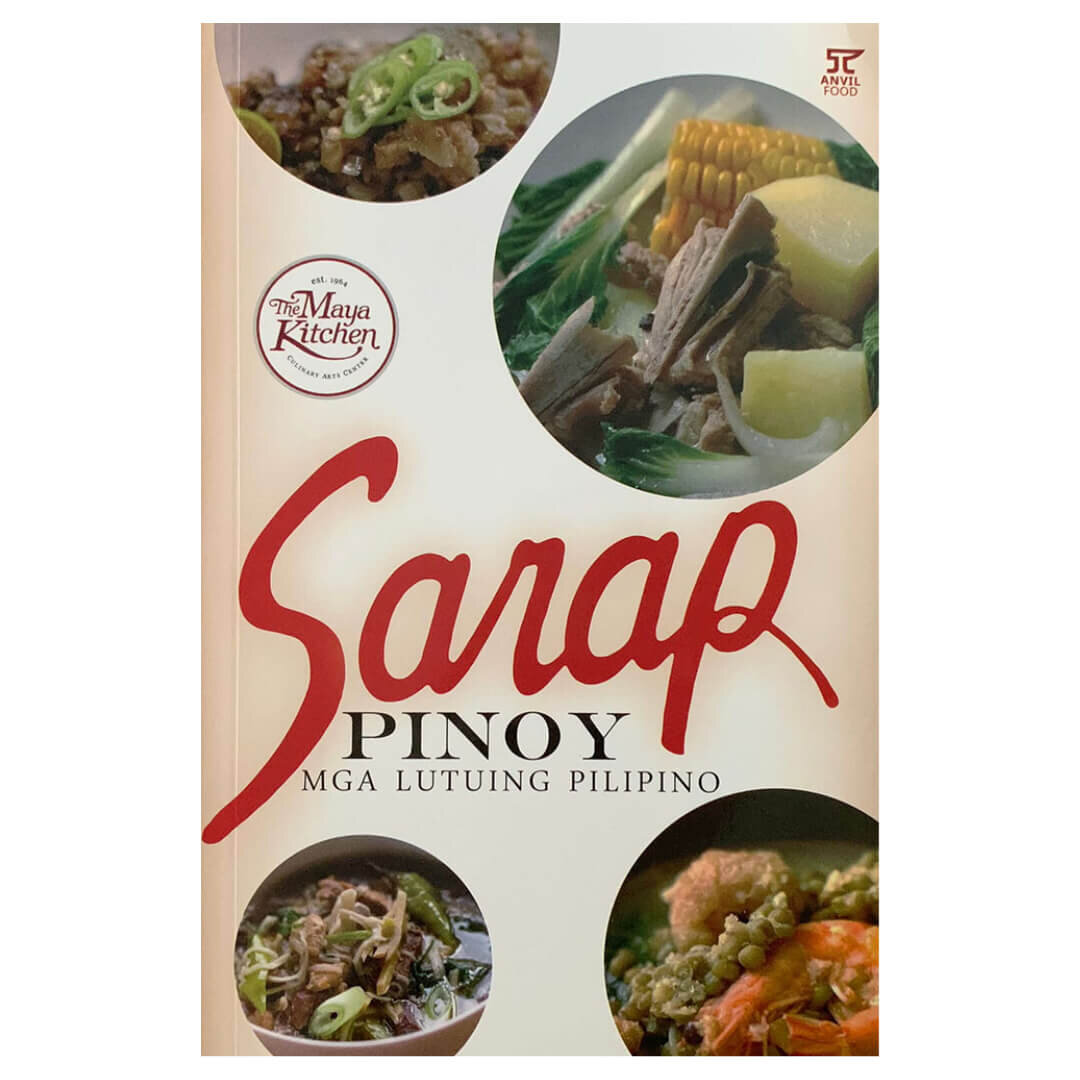Sarap Meaning Tagalog: Unpacking Filipino Delight & Culture
Ever wondered about the true essence of delight in the Philippines? The answer often lies in a single, powerful word: sarap. More than just a simple translation of 'delicious,' this Tagalog term encapsulates a rich tapestry of sensory pleasure, cultural identity, and shared experience. It’s a word that resonates deeply within the Filipino psyche, carrying layers of meaning that go far beyond a mere culinary descriptor.
- Actor For Conrad Fisher
- Debra Capriolgio
- Simone Baldasseroni Movies
- Scientist In Jaws
- Human Being Human Beings
This article delves deep into the multifaceted sarap meaning Tagalog, exploring its linguistic nuances, cultural significance, and how it permeates various aspects of Filipino life, from food to feelings. We'll uncover its synonyms, related terms, and the subtle differences that make it so unique, providing you with a comprehensive understanding of this indispensable word.
Table of Contents
- The Core Sarap Meaning Tagalog: Beyond Just "Delicious"
- Sarap vs. Masarap: A Deeper Dive into Tagalog Adjectives
- The Cultural Resonance of Sarap
- Linguistic Relatives: Talap, Charap, Chalap, and Rapsa
- Sarap in Everyday Sentences: Practical Usage
- The Root of Delight: Exploring the Filipino Word Sarap
- Sarap Across Dialects: Tagalog, Cebuano, and Beyond
- Mastering Sarap: Tips for Language Learners
The Core Sarap Meaning Tagalog: Beyond Just "Delicious"
At its most fundamental, the sarap meaning Tagalog translates to "a good flavor, pleasant taste," or simply "deliciousness / tastiness (n)." It is the noun form of deliciousness, representing the quality itself. When you hear "sarap," it literally means "yummy!" or "delicious!" in an exclamatory sense. However, as linguistic data suggests, the true meaning of sarap goes beyond just describing food or physical sensations. It is a word that encapsulates the essence of Filipino culture, history, and identity, reflecting a people who deeply appreciate life's simple pleasures.
While often associated with food, sarap is not confined to the culinary world. It extends to any experience that brings profound pleasure or satisfaction. Think of the joy of a cool breeze on a hot day, the comfort of a good nap, or the thrill of a successful endeavor – all these can be described with sarap. This versatility makes it a powerful and frequently used term in everyday Filipino conversation. Synonyms and related words like "Linamnam" (deliciousness, savoriness) and "kasarapan" (the state of being delicious or pleasurable) further enrich its semantic field, highlighting the nuanced ways Filipinos express delight.
Sarap vs. Masarap: A Deeper Dive into Tagalog Adjectives
One of the most common questions for Tagalog learners is, "What is the difference between masarap and sarap?" This distinction is crucial for proper usage. Based on linguistic insights, "masarap" is the adjective form, meaning "delicious / tasty (adj)," while "sarap" is the noun, meaning "deliciousness / tastiness (n)." This is similar to the English distinction between "beautiful" (adjective) and "beauty" (noun).
Here's a breakdown with examples:
- Masarap (Adjective): Used to describe something that *is* delicious.
- Masarap ang ulam. (The viand is delicious.)
- Masarap ang kape mo. (Your coffee is delicious.)
- Masarap ang buhay. (Life is good/delicious – used figuratively for pleasure.)
- Sarap (Noun/Exclamatory): Refers to the quality of deliciousness itself, or used as an exclamation. It cannot stand alone as an adjective. To use it adjectivally, it often requires the particle "ang."
- Ang sarap! (How delicious! / So delicious!) - This is a common exclamation.
- Sarap ng tulog ko. (My sleep was so good/pleasurable.) - Here, "sarap" functions more like a noun referring to the quality of the sleep.
- Ang sarap ng pagkain. (The food is so delicious.) - "Ang sarap" effectively functions as an adjective phrase here, similar to "masarap."
The proper adjective form is indeed "masarap," though in casual speech, "sarap" is often shortened and used in place of "masarap," especially in exclamations like "Ang sarap!" or "Sarap!" This rule is akin to "maganda" (beautiful, adjective) and "ganda" (prettiness/beauty, noun), where "Ang ganda!" is a common exclamation for "How beautiful!" Understanding this grammatical nuance is key to mastering the sarap meaning Tagalog in various contexts.
The Cultural Resonance of Sarap
The word sarap is far more than a mere linguistic label; it is deeply embedded in the Filipino cultural fabric. It represents a profound appreciation for sensory experiences and life's simple joys. While its primary association is with food – the "essence of deliciousness" that makes Filipino cuisine so renowned – its application extends to encompass any feeling or situation that brings pleasure and satisfaction. This breadth of meaning highlights a cultural inclination towards finding and savoring positive experiences, no matter how small.
For instance, while a dish might be described as "masarap," the feeling of contentment after a satisfying meal is truly "sarap." This extends beyond the palate; you might hear someone say "Sarap ng buhay!" (Life is good/delicious!) when they are feeling content and happy. The term also takes on playful, informal meanings, as noted in the data, where "you may hear girls say it pertaining to men with good physique (hot men) lol." This humorous application underscores the word's versatility and its ability to describe any form of "pleasure" or "delight," whether physical or emotional. It connects to concepts like "Gana" (appetite), "pagkakagana" (appetite/desire), "gusto" (liking), and "pagkakagusto" (the act of liking), all of which revolve around desire and enjoyment. Learning Tagalog reveals how different cultures express sensory experiences, especially when it comes to taste, and sarap stands as a prime example of this rich cultural expression.
Linguistic Relatives: Talap, Charap, Chalap, and Rapsa
The flexibility and expressiveness of the sarap meaning Tagalog are further highlighted by its various linguistic relatives and slang terms that have emerged from it. These variations often reflect informal speech, regional accents, or playful inversions that are common in Filipino communication. You might encounter "Talap," "Charap," or "Chalap" as informal or slightly altered pronunciations of "sarap," particularly in casual conversations or online interactions. These variations often carry the same core meaning of deliciousness or pleasure but with a more relaxed or endearing tone.
Perhaps one of the most interesting slang terms derived from sarap is "Rapsa." This word is a classic example of a "syllable reversal" or "baliktaran" slang, where the syllables of "sarap" are simply flipped to create a new, informal term. "Rapsa" also means "deliciousness" or "tastiness" and is widely understood, especially among younger generations. This playful manipulation of words is a common feature of Filipino slang, demonstrating the dynamic and evolving nature of the language. While "masarap" remains the proper adjective form, these slang terms like "Rapsa" and the shortened "sarap" (as in "Ang sarap!") are frequently used in everyday speech, adding flavor and informality to conversations about delightful experiences.
Sarap in Everyday Sentences: Practical Usage
To truly grasp the sarap meaning Tagalog, it's essential to see it in action through example sentences. Its versatility allows it to be used in various contexts, from expressing culinary delight to describing general pleasure. Here are some practical examples:
Food Contexts:
- "Ang sarap ng adobo!" (The adobo is so delicious!) - A classic exclamation of enjoyment.
- "Tutulò ang laway mo sa saráp!" (Your mouth will water from the deliciousness!) - A vivid description of something incredibly tasty.
- "Sarap masarap ansarap neto!" (Delicious, very delicious, this is so delicious!) - A common progression of expressions, often heard when someone is truly enjoying a meal, like seafood. "Ansarap neto" is a shortened, emphatic way of saying "This is so delicious."
- "Sarap ng kape ngayong umaga." (The coffee this morning is delicious/good.)
Non-Food Contexts:
- "Sarap ng tulog ko kagabi." (My sleep last night was so good/pleasurable.) - Describing a restful experience.
- "Ang sarap ng feeling na makauwi na." (It feels so good to finally go home.) - Expressing relief and comfort.
- "Sarap mag-relax sa beach." (It's so pleasurable to relax at the beach.) - Describing an enjoyable activity.
- "Sarap ng buhay!" (Life is good/delicious!) - A general expression of contentment and happiness.
As you can see, sarap is a slang term that originated in the Philippines and is often used to describe something that is delicious or pleasurable. It's an immediate, visceral reaction, often equivalent to simply saying "yummy!" in Tagalog. The context usually clarifies whether it refers to food or another form of enjoyment, making it an indispensable part of daily Filipino communication.
The Root of Delight: Exploring the Filipino Word Sarap
Understanding the sarap meaning Tagalog also involves appreciating its role as a root word in the Filipino language. Many Tagalog words are formed by adding prefixes, suffixes, or infixes to a root word, altering its meaning or grammatical function. While the provided data doesn't list an extensive family of words derived from the "Filipino root sarap," its core meaning of "deliciousness" or "pleasure" can be seen influencing related concepts.
For instance, the word "pasarap" (to make something delicious or to enhance its flavor) directly stems from "sarap." This highlights the active process of creating or adding to the "sarap" of something. The concept of "something to add flavor to food" or "to like the taste of" inherently connects back to the root idea of "sarap." This root word serves as a foundation for expressing various aspects of taste and enjoyment, from the simple act of liking a flavor ("gusto ang sarap") to the effort involved in making something more palatable. It signifies that the concept of delight is fundamental and can be built upon or modified through linguistic construction, reinforcing its central role in expressing sensory satisfaction.
Sarap Across Dialects: Tagalog, Cebuano, and Beyond
While Tagalog is formally known as Filipino, the national language of the Philippines, the archipelago is home to over 180 distinct languages and dialects. The concept of "deliciousness" is universal, but its expression varies. The sarap meaning Tagalog is widely understood across the Philippines due to Tagalog's status as the national language. However, it's interesting to note how this concept might be expressed in other major languages, such as Cebuano, which is widely spoken in the Visayas and Mindanao regions.
The provided data mentions "sarap Tagalog definition" and "sarap Cebuano definition," indicating that the word "sarap" itself might be used or understood in Cebuano contexts, or at least that the concept is directly translatable. While Cebuano has its own rich vocabulary, including words like "lamian" (delicious) or "lami" (tasty), the influence of Tagalog, particularly through media and migration, means that "sarap" can be recognized even outside its primary linguistic domain. This cross-dialectal recognition underscores the word's potency and its pervasive presence in the Filipino linguistic landscape, acting as a bridge for expressing universal pleasure and satisfaction across different regional tongues.
Mastering Sarap: Tips for Language Learners
For anyone learning Tagalog, truly grasping the sarap meaning Tagalog is a significant step towards fluency and cultural immersion. These words are indispensable when describing food, but they have different nuances that are important to master. Here are some tips to help you effectively use "sarap" and its related terms:
- Listen to Context: Pay close attention to how native speakers use "sarap" versus "masarap." You'll notice "Ang sarap!" is a very common exclamation, while "Masarap ang pagkain" is used for descriptive statements.
- Practice Exclamations: Don't be afraid to use "Ang sarap!" or just "Sarap!" when you genuinely enjoy something. Filipinos appreciate when learners engage with their language naturally.
- Expand Beyond Food: Remember that "sarap" isn't just for food. Practice using it to describe other pleasant experiences: "Sarap ng simoy ng hangin" (The breeze feels good), "Sarap ng buhay" (Life is good).
- Understand the Noun/Adjective Distinction: Internalize that "masarap" is the adjective (describes *what* is delicious), and "sarap" is the noun (the *quality* of deliciousness). This will prevent common grammatical errors.
- Explore Slang: Familiarize yourself with terms like "Rapsa" for casual conversations, but understand that these are informal and might not be appropriate in all settings.
- Immerse Yourself: The best way to learn is through immersion. Watch Filipino movies, listen to music, and interact with native speakers. You'll pick up the subtle nuances of sarap and other sensory expressions naturally.
As Tagalog is known formally as Filipino, the national language of the Philippines, and an official language alongside English, mastering words like sarap will significantly enhance your ability to communicate and connect with Filipino culture on a deeper level. It’s a word that opens doors to understanding the Filipino way of life, where joy and appreciation are often expressed through simple yet profound terms.
In conclusion, the sarap meaning Tagalog extends far beyond a mere translation of "delicious." It is a powerful, multifaceted word that encapsulates sensory pleasure, cultural identity, and a deep appreciation for life's delightful moments. From the satisfying taste of a home-cooked meal to the simple joy of a good night's sleep, "sarap" permeates the Filipino experience, serving as a testament to a culture that savors every bit of enjoyment. Understanding its nuances, its relationship with "masarap," and its various linguistic relatives offers a richer insight into the heart of Filipino communication.
What's your favorite "sarap" experience? Share it in the comments below, or if you found this article helpful, consider sharing it with fellow language enthusiasts or food lovers. Continue your journey into the rich tapestry of the Tagalog language and discover more words that define the Filipino spirit!



Detail Author:
- Name : Remington Sanford
- Username : jenkins.hester
- Email : weissnat.alyson@bartoletti.org
- Birthdate : 1994-07-14
- Address : 487 Bosco Pike Suite 309 Harbershire, IN 44813-9985
- Phone : 1-757-675-9433
- Company : Mraz Ltd
- Job : Geologist
- Bio : Et quibusdam tempora aliquam saepe natus ipsum libero beatae. Delectus tenetur velit iusto. Ad quia animi alias repellendus non consequatur.
Socials
tiktok:
- url : https://tiktok.com/@hillsc
- username : hillsc
- bio : Eum accusamus aut eaque atque nihil.
- followers : 3360
- following : 1545
facebook:
- url : https://facebook.com/cary.hills
- username : cary.hills
- bio : Voluptatem non et et. Iure ea veritatis saepe itaque.
- followers : 1730
- following : 1584
instagram:
- url : https://instagram.com/cary.hills
- username : cary.hills
- bio : Neque rerum neque dolore voluptatem reprehenderit et. Sit odit amet ut ut odio. Ea et inventore et.
- followers : 6499
- following : 2446
twitter:
- url : https://twitter.com/chills
- username : chills
- bio : Ea debitis placeat consequuntur officia. Veritatis rem nobis soluta sunt perspiciatis.
- followers : 1688
- following : 1505
linkedin:
- url : https://linkedin.com/in/hills2023
- username : hills2023
- bio : Nemo rerum repudiandae molestiae non illo.
- followers : 2658
- following : 181